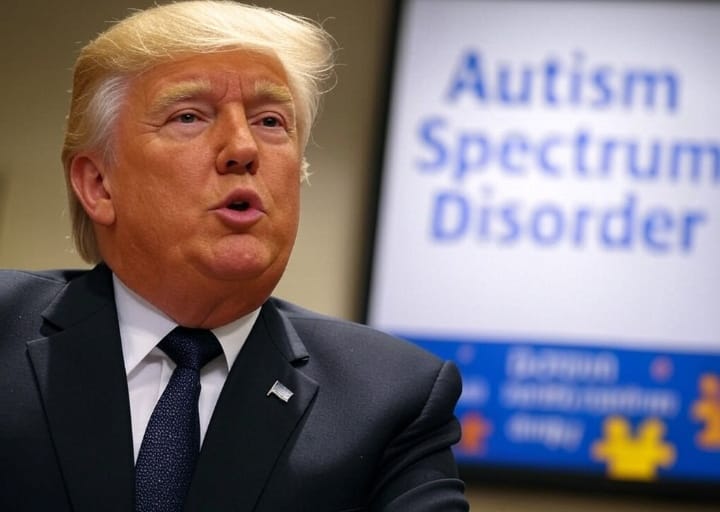Issues of autism have been debated both medically and in the social arena for a long time. Most recently, it was stirred into controversy by none other than former President Donald Trump himself with sweeping pronouncements about its rate of growth and his promise to get to the bottom of it. Autism and Donald Trump create an incendiary intersection that provokes public debate over the cause of the disorder as well as actions needed for family and individual support.
The Rise of Autism: A Fact or a Byproduct of Awareness?
Diagnoses of autism have dramatically increased in recent decades. Trump referred to data showing that the prevalence of autism has gone up, from 1 in 88 children in 2012 to 1 in 36 today. Some experts have said that shows improved diagnostic tools and heightened awareness, while others have said it may link to some environmental or genetic cause that’s actually causing more cases.
What Is Autism Spectrum Disorder?
Autism Spectrum Disorder is a developmental condition comprising problems with social interaction, verbal and non-verbal communication, and restricted and repeated patterns of behavior, interest, or activities. Being a spectrum disorder, it differs in every person-from mild impairment to a severe disability. Different families experience autism differently, partly depending on early intervention services and community acceptance available to them.
Donald Trump’s Commitment to Autism
Throughout his presidency, Donald Trump referred to the autism epidemic time after time. Perhaps one of the most contentious decisions he made was appointing Robert F. Kennedy Jr. to a health-related advisory post. Kennedy is a harsh critic of vaccines and has blamed certain vaccines for causing autism-a claim scientifically debunked by numerous research studies. The fact that Trump aligned himself with Kennedy underlined his readiness to pursue unconventional paths but also drew criticism from public health experts.
The Vaccine Controversy
Vaccines have always been at the center of controversies linked to autism. Despite overwhelming scientific evidence that has dismissed any causative relationship between vaccines and autism, some quarters remain skeptical. While Trump’s acknowledgment gave such people a voice, the expressed fears of reduced vaccination rates compromised public health.
Breaking Down the Science
No credible evidence has been found, not even in the extensive studies undertaken by the Centers for Disease Control and Prevention, linking vaccines to autism. Researchers identify genetics as a leading cause of the condition. A shift in focus is now being made toward understanding the interaction between genetics and the environment.
Autism and Early Diagnosis
Another area Trump pointed out was early diagnosis. The earlier symptoms of autism are identified, the better the interventions. Symptoms to watch out for include the following:
- Delayed speech and language
- Avoiding direct eye contact
- Hand flapping, body rocking, or other repetitive actions
- Limited or no interest in people.
Parents and pediatricians play a crucial role in identifying these signs and initiating evaluations.
The Role of Policy in Autism Support
Trump’s focus on autism went through diagnoses to the supporting structures that concerned families had. They considered ways in which access to therapies, special education, and financial supports might be expanded. Critics would further propose that these did little to seriously address systemic barriers facing affected families.
Insurance and Therapy Access
The most recommended intervention for cases of autism is ABA therapy, though many families cannot cover this because of gaps in insurance cover. Trump’s policies in healthcare were meant to cover such gaps, though their execution met many hiccups, thus leaving many families underserved.
Public Perception of Autism and Donald Trump
Comments from Trump about autism, alongside other associations with controversial figures such as Robert F. Kennedy Jr., have elicited a variety of reactions-from applause to criticism-accusing him of bringing misinformation into the mainstream consciousness. A discussion like that is a clear example that, first and foremost, conversations need to be balanced based on evidence and empathy.
Media Coverage and Its Impact
The media have played a very important role in shaping public opinion on Trump’s policies related to autism. Sensationalized headlines substituted for reasoned debate, confusing the public on what the administration’s true position really was. A better-informed media could help close the understanding gap.
Looking Ahead: Autism Research and Advocacy
The discussion of autism and Donald Trump serves to reinforce the need for an accelerated approach in research and advocacy. The areas of priority include, but are not limited to:
- Genetic Research: The genetic underpinning of autism can lead to personalized interventions.
- Awareness Campaigns: Public education about the complexity of autism reduces stigma and increases inclusivity.
- Support Networks: Policies that support access to affordable therapies and inclusive education can empower families.
A Collaborative Approach
Addressing the challenges of autism will clearly require collaboration between policymakers, researchers, and community advocates. Controversy aside, Trump brings attention to an issue that really does need everyone’s effort to help affected individuals and their families.
Conclusion: A Call for Action and Understanding
The intersection of autism and Donald Trump’s policies reminds us that there is much inside the condition. While debates over causes and interventions continue unabated, the shared vision is unmistakable: to work toward a better life for those with autism and their families. We can ensure a future in which autism will be better understood and dealt with by fostering informed discussions and advancing evidence-based solutions.

